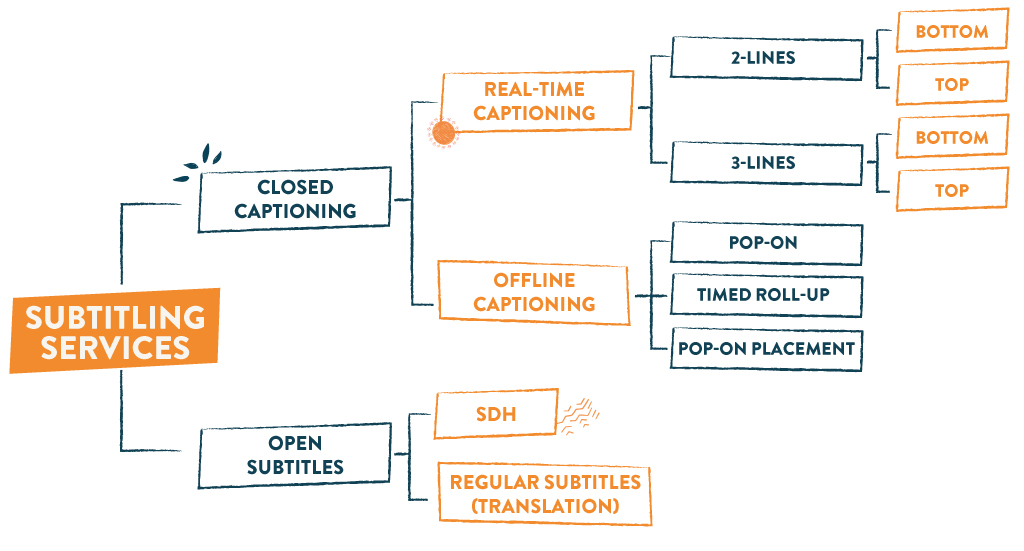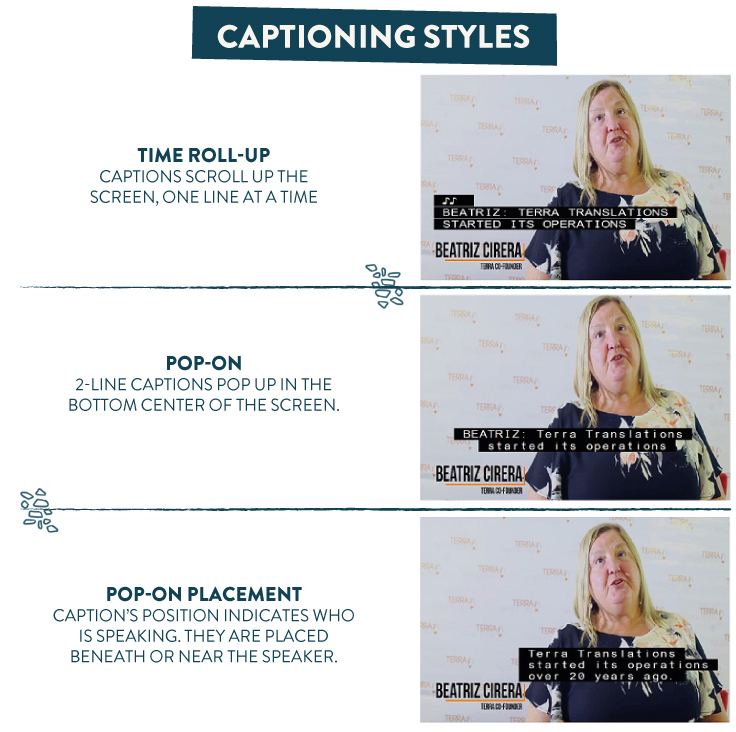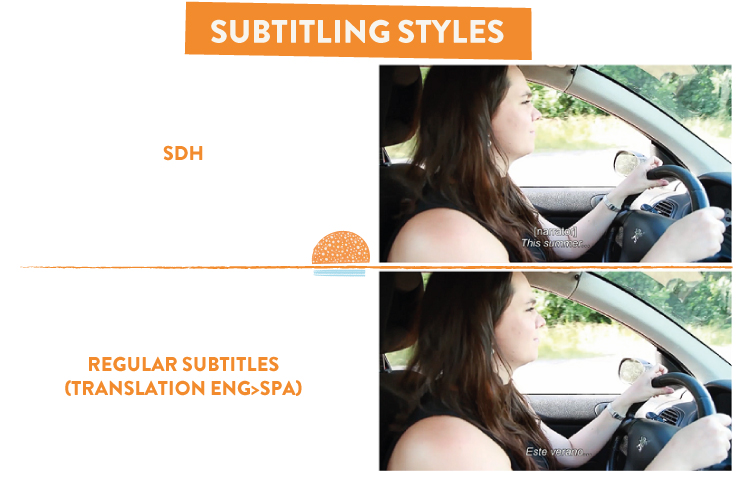On the internet, we can watch a movie, read the news, explore endless options of items to purchase, order food and even take online courses, among countless other actions. We have access to that content (text, video, images, audio) across the globe because, in most cases, it is available in different languages. This is possible due to media localization, a process that not only involves the translation of text or audio but also other services, such as subtitling, graphic design, web design, audio recording, etc.
Specifically, for translating e-learning courses and audiovisual material, subtitling is a very common resource. But there are many types and styles of subtitling available when deciding how to translate content, depending on every need. The most important distinction is between closed captioning and open subtitling because their aspect, audience, and function are different.

1) Closed Captioning
Closed Captioning is a specific type of subtitle, an accessibility resource. Its function is, primarily, to make content available to people who have hearing impairments. In real-time captioning (used in live shows or news programs), online subtitlers create a caption of what is being said, so people can read it. They type and use dictation software or a stenography system. Also, it is possible to generate a caption file offline, with pre-recorded material.

Some of the Closed Caption characteristics are the following:
- It includes sound effects, such as [laugh], [music], [thunder].
- They can be turned on or off with remote control (in TV systems).
- Audio language and text language are the same.
- It’s widely used in e-learning courses, streaming platforms, and TV.
- Text is displayed on a black background.
- It’s also useful where silence is required (in offices, waiting rooms) or as hearing support (to learn languages, bad audio quality).

2) Open Subtitling
Open Subtitling is the most common type of subtitling, the one we can find in movies or programs in foreign languages. Its function is to translate source text and audio into another language.
However, SDH (Subtitles for the Deaf or Hard-of-Hearing) is a type of open subtitle that has another purpose. They have the same function as Closed Captioning but look like common subtitles.
The main characteristics of open subtitling are the following:
- In traditional TV systems or theaters, subtitles cannot be turned off, because they are embedded in the video.
- Subtitles are displayed without a contrasting background.
- Audio language and text language are different: it’s a translation.
- In SHD, audio and text language are the same.
- SDH has sound effects and speakers’ identification.

Rules and Guidelines
Before working on a subtitling task, it’s important to know if the project has any technical parameters, as well as preferences about subtitling type and style, speakers’ IDs treatment, and letter case.
Furthermore, subtitlers must comply with the specifications provided in customers’ style guides, if any, which set the style and technical expectations for the captioned or translated text.
As we can see, there are a lot of options when looking for a media localization solution. All of these promote inclusion while helping clients’ audiences expand one subtitle at a time.









